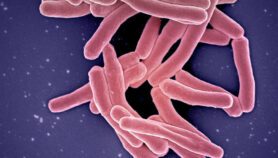By: Andrew Williams
Send to a friend
The details you provide on this page will not be used to send unsolicited email, and will not be sold to a 3rd party. See privacy policy.
International development agencies may be able to save the lives of a greater number of undernourished children by changing how they allocate food aid in developing countries, suggests a study published today (4 March) in Proceedings of the National Academy of Sciences.
Instead of allocating food based solely on weight-for-height measurements, as is currently recommended, making use of additional 'height-for-age' data reduced the effects of malnutrition by nine per cent in the study.
Also, the same end results in alleviating malnutrition were achieved with the new method as with the current one but with a 61 per cent cut in the cost of providing ready-to-use therapeutic and supplementary food, the study found.
The findings are based on mathematical modelling using data from more than 5,600 children from Bwamanda in the Democratic Republic of Congo.
The study also proposes that when making crucial food allocation decisions, aid agencies should prioritise those children most in need — even if it means that others go without.
Lawrence M. Wein, professor of management science at Stanford University, United States, and the corresponding author of the study, says one of the main results is that "relative to the currently used policies, incorporating height-for-age information into the allocation decision improves performance — that is, it saves lives".
The other key finding is that "the optimal policy is an 'all-or-nothing' policy where the most at-risk children receive 500 kilocalories per day and the other children receive nothing," he says.
But because of the limited scope of the study, the authors do not make specific policy recommendations.
They call for more data that can be used to inform such pressing allocation decisions, and also highlight the scarcity of useful data on the effect of food-based treatment.
"Without better data, policymakers will continue to make these important allocation decisions in the face of very limited information," says Wein.
However, paediatrician Patricia Wolff, executive director of US-based food aid organisation Meds & Food for Kids, argues that height-for-age is a measure of chronic rather than acute malnutrition.
"Being stunted is not related to acute risk of death, although over a lifetime a stunted person will be less healthy than a non-stunted person," she says.
"I don't agree that, in resource-poor environments, this stunted group has an equivalent risk-benefit ratio to those children who are low on the weight-for-height graph," she adds.
Although wary of the benefits of including height-for-age data in food allocation decisions, Wolff admits that the proposed 'all-or-nothing' approach could save more lives.
"If you mean by an 'all-or-nothing' policy that you give the appropriate treatment resources to the sickest children first and then look around to see if you can find more resources, then I agree. First, you save lives. Second, you optimise health," she says.














